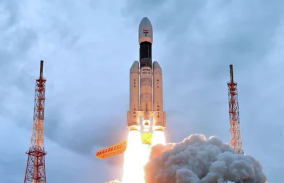On Sunday, the demolition of the Supertech Twin Towers in Noida will finally come to fruition, bringing to an end a nine-year tussle. Residents of Noida’s Emerald Court in sector 93A had approached the Allahabad High Court in end-2012 after builders reneged on their original blueprint of providing green space to the complex’s residents. But a change of plan in 2012 okayed the construction of the two towers- Apex and Cayene- on the greenery promised to property owners at Emerald Court. The High Court ordered its demolition (along with refunds with interest for buyers) in 2014, and the Supreme Court upheld the decision last year.
Given its size- 100 metres tall and 40 floors- 3500 kg of explosives will be used. Edifice Engineering- in partnership with South African demolition experts Jet Demolition- won the contract for the demolition. It will take 9 seconds for the destruction to set off and another 4-5 seconds for the buildings to collapse.
Also Read: Who will be attending the swearing-in ceremony of CJI UU Lalit
The Method
The proximity of nearby societies Emerald Green and ATS Green prevents the use of conventional methods: wrecking balls or cranes with extended arms. Instead, a technique known as ‘Building Implosion’ will be applied to demolish the twin towers.
Building implosion means caving into its foundations, i.e., collapsing straight down without falling outwards or sideways.
The Planning
First, the blueprint is studied to determine the nature of the explosives. According to a paper titled ‘Demolition of Buildings by Implosion,’ the most commonly used explosives are “dynamites (straight, ammonia and gelatin), water gels, emulsions, PETN (penta-erythritol tetra- nitrate) and RDX (Cyclotrimethylene-trinitramine).”
Blasters- those who carry out the explosion/implosion- decide on the number and volume of explosives required. It is a laborious process involving multiple test blasts to arrive at a precise figure.
The next step involves removing columns that don’t support the building’s structure. If not removed, the columns may offer resistance, forcing the buildings to explode outwards instead of inwards. For the Supertech Towers, the plan is to make them collapse into each other, allowing for the rubble to collect at the centre.
Timing is, of course, a key element in the whole exercise. A minor delay can cause the structure to fall sideways instead of inwards.
The Blast
A sizeable force needs to be applied to trigger the blast. For this reason, explosives are attached to a blasting cap. According to the study, the latter is a device which sets off the detonation via a “charge of a high explosive by subjecting it to percussion by a shock wave.” The blasters light one end of the cord and spread to the other end of the wire to spark the explosion- think of the various cartoon gags involving detonations from our childhood. Electronic wires can also be used for this purpose.
Also Read: Sonali Phogat death: Police detain suspected drug peddler, restaurant owner
The Precautions
The towers stand wrapped in geotextile fabric- made of polypropylene and polyester. Impact cushions have been placed in the basements and across the courtyard. The white sheath (geotextile fabric) surrounding the towers will prevent debris from scattering. The cushions will minimize the tremors from the blast, sparing the nearby buildings of unwanted shocks and damage. Project Manager, Mayur Mehta, did admit that window panes of the surrounding buildings are at risk of breakage, but nothing more.






